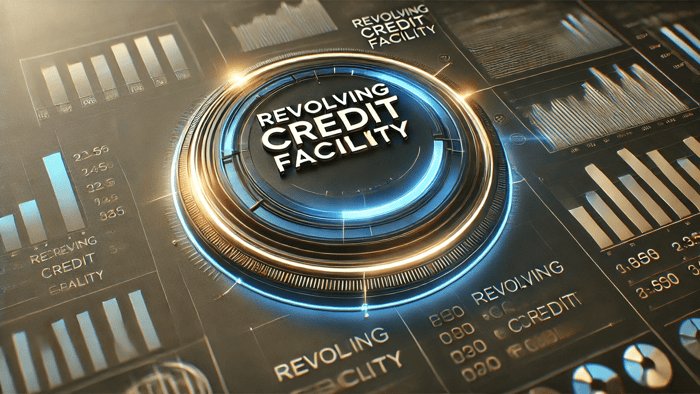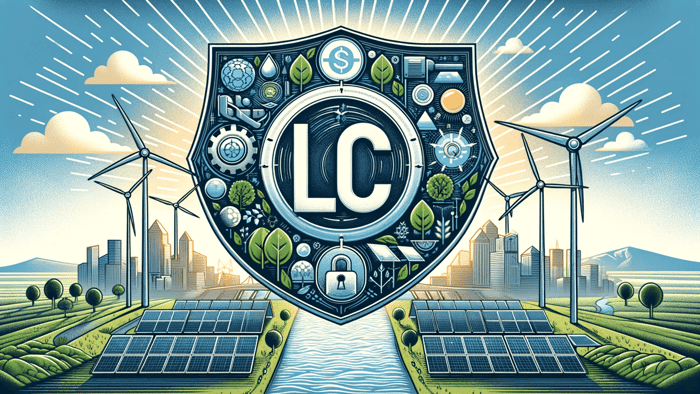In the evolving landscape of renewable energy project finance, a deep understanding of financing instruments is crucial for both aspiring analysts and seasoned professionals. One such instrument known for its flexibility and efficiency is the revolving credit facility—often simply referred to as a “revolver” in industry circles. This article will explore what revolving credit facilities are, how they work in the context of renewable energy projects, and why they might be a preferred financing solution in today’s dynamic market.
What Is a Revolving Credit Facility?
A revolving credit facility is a line of credit extended by a financial institution that allows the borrower to draw, repay, and redraw funds as needed. Unlike traditional term loans with fixed repayment schedules, a revolving credit facility provides flexibility in managing cash flows, which is particularly beneficial for industries with fluctuating financing needs.
Key Characteristics:
Flexibility:
Borrowers can access funds on-demand up to a predetermined limit.Reusability:
As repayments are made, the available credit replenishes, allowing for further withdrawals without needing to reapply for a new loan.Fee Structure:
The fee structure in a revolving credit facility is multi-layered:- Upfront Fee:
This is charged once when the facility is established on the full available amount. For example, an upfront fee might be 1.5% of the total credit limit. For a $1,000,000 facility, this results in a fee of $15,000. - Interest on Drawn Amounts:
Interest is calculated only on the drawn portion and is determined by a fixed margin plus a floating base rate (e.g., EURIBOR or SOFR). The fixed margin typically remains constant throughout the agreement, while the base rate may fluctuate. For instance, if the margin is 2.0% and the base rate is 3.5%, the effective interest rate is 5.5%. - Commitment Fee on Undrawn Amounts:
A commitment fee is charged on the undrawn portion of the credit line. This fee is typically calculated as a percentage of the margin. For example, if the fee is set at 40% of a 2.0% margin, the effective commitment fee rate is 0.8% per year on the undrawn amount.
- Upfront Fee:
The Role of Revolving Credit Facilities in Renewable Energy Project Finance
Renewable energy projects—such as solar farms, onshore & offshore wind farms, and bioenergy plants—often involve complex financing arrangements due to their high upfront capital costs and long payback periods. Here, the revolving credit facility serves as a versatile tool for addressing several financial challenges:
1. Bridging Cash Flow Gaps
Renewable energy projects may experience periods where revenue generation is not aligned with expenditure needs. For example, suppose a wind farm has a credit limit of $1,000,000. During a low-revenue period, the project might draw $300,000 to cover operational expenses, thereby bridging temporary cash flow gaps without the need for additional financing.
2. Supporting Operational Flexibility
Given the seasonal or intermittent nature of renewable energy production, the ability to draw on funds as needed is critical. Imagine a solar plant that anticipates an unexpected maintenance cost of $150,000 mid-cycle. With a revolving credit facility, the project can simply draw the required amount rather than arranging a separate loan, ensuring smooth operations.
3. Enhancing Financial Stability
By supplementing other forms of long-term financing, revolving credit facilities help stabilize a project’s working capital. The flexibility of having a replenishing credit line not only provides security for day-to-day operations but also boosts investor confidence by demonstrating robust financial planning.
How Does a Revolving Credit Facility Work?
To better understand its application in renewable energy project finance, consider this step-by-step breakdown with detailed numeric examples, including the fee structure:

The Drawdown Process
Establishment of a Credit Limit:
A lender and borrower agree on a maximum amount available for drawdown.
Example: A renewable energy project is approved for a revolving credit facility with a $1,000,000 limit.Flexible Access to Funds:
The borrower can draw funds up to the credit limit as needed.
Example: The project initially draws $400,000 to cover early operational expenses.Interest and Fee Structure:
The fee structure consists of three main components:Upfront Fee:
Charged once when the facility is established.
Example: With a credit limit of $1,000,000 and an upfront fee of 1.5%, the fee equals $15,000.Interest on Drawn Amounts:
Calculated as a fixed margin plus a base rate.
Example: If the drawn $400,000 is subject to an interest rate calculated as a 2.0% margin plus a 3.5% base rate, the effective interest rate is 5.5%. This results in an annual interest cost of $400,000 × 5.5% = $22,000.Commitment Fee on Undrawn Amounts:
Charged on the undrawn portion of the credit line.
Example: With $400,000 drawn, the undrawn amount is $600,000. If the commitment fee is 40% of a 2.0% margin, the effective fee rate is 0.8% (0.4 × 2.0%). Annually, this fee amounts to $600,000 × 0.8% = $4,800.
Replenishment of the Facility:
As the borrower repays the drawn amount, the credit becomes available again for future use.
Example: If $100,000 is repaid, the available credit increases to $700,000 (i.e., $1,000,000 - $400,000 + $100,000). Subsequent draws adjust the available balance accordingly.
These examples illustrate how the revolving facility dynamically manages funds and fees based on actual usage.
Practical Applications of a Revolver in Project Finance
Revolving credit facilities—commonly referred to as "revolvers"—are employed in several practical scenarios within project finance. Here are some examples that illustrate their versatility:
1. Debt Service Reserve Facility (DSRF)
Many renewable energy projects require a Debt Service Reserve Facility to ensure that debt obligations are met even during periods of reduced cash inflow.
Understanding CFADS:
CFADS (Cash Flow Available for Debt Service) is the cash flow generated by a project—after operating expenses and capital expenditures—that is available to service debt payments.
Example:
- A wind project has monthly debt service payments of $100,000.
- A DSRF of $600,000 (equivalent to six months of debt service) is established to cover shortfalls.
- If, in a given month, the project's CFADS falls short (e.g., only $80,000 is available), the DSRF covers the $20,000 shortfall. This ensures that the commercial term loan repayments are maintained even when CFADS are lower than expected.
For a deeper dive into DSRF modeling, please refer to our Expert-Level Project Finance Modeling for Renewable Energy course.
2. VAT Facility
During construction phases, renewable energy projects often incur significant VAT expenses that governments later reimburse. A VAT facility, structured as a revolving credit facility, can cover these upfront costs.
Example:
- A solar project incurs $300,000 in VAT-related expenses during construction.
- The revolver covers these costs until the government reimburses the VAT, typically within a year.
- Upon reimbursement, the $300,000 is repaid, restoring the credit line.
3. Construction Bridge Financing
During construction, projects may face unexpected cost overruns or delays. A revolver can provide the necessary funds to cover these additional expenses until long-term financing or project revenues begin.
Example:
- A project encounters an unexpected construction cost overrun of $150,000.
- The revolver supplies the short-term funding required, and once additional financing is secured or revenue increases, the amount is repaid to replenish the facility.
4. Working Capital Management
A revolver is also used for general working capital management, ensuring that day-to-day operational expenses are met without disrupting the overall financial structure. This flexibility is especially valuable for projects with variable revenue streams.
Challenges and Considerations
While revolving credit facilities offer significant benefits, they also come with potential challenges that require careful management:
Interest Rate Fluctuations and Fee Structures
Floating Base Rate vs. Fixed Margin:
Interest on drawn amounts is calculated as the sum of a fixed margin and a floating base rate (e.g., EURIBOR or SOFR). While the margin is fixed throughout the agreement, the base rate may fluctuate, leading to variations in overall borrowing costs.Commitment Fees:
These fees are charged on the undrawn portion of the credit line. For example, if the margin is 2.0% and the commitment fee is set at 40% of that margin, then an effective rate of 0.8% applies to the undrawn funds.Upfront Fee:
A one-time fee (commonly around 150 basis points or 1.5%) is typically charged when the facility is established on the full available amount.
Covenants and Restrictions
Revolving credit facilities often include covenants or conditions—such as maintaining specific financial ratios—that the borrower must adhere to. Non-compliance can result in penalties or early termination of the facility, impacting the project's financial stability.
Structuring a Revolving Credit Facility for Renewable Energy Projects
When structuring a revolving credit facility for a renewable energy project, several best practices can help ensure that the facility meets the project’s needs:
Assessing Project Cash Flows
A detailed cash flow analysis is critical in determining the appropriate credit limit.
Example: If analysis indicates a monthly cash flow requirement of $200,000 during low-revenue periods, establishing a facility with a credit limit significantly above this figure—say, $1,000,000—can provide a comfortable buffer.
Negotiating Flexible Terms
Work closely with lenders to negotiate terms that allow for operational flexibility, such as lower commitment fees or provisions that accommodate the unique challenges of renewable energy projects.
Integrating with Overall Financing Strategy
A revolving credit facility should complement other financing instruments (such as term loans or equity investments) to ensure optimal capital allocation and risk management.
The Renewables Valuation Institute Approach
For professionals seeking to deepen their expertise in renewable energy project finance, the Renewables Valuation Institute offers comprehensive resources that blend theoretical knowledge with practical application. Our training programs not only cover the nuances of instruments like the revolving credit facility but also equip you with the skills to apply these concepts effectively in real-world scenarios.
Explore the RVA Certification Program
The Renewables Valuation Analyst Program offers a focused and practical approach to mastering financial modeling for renewable energy projects. This specialized program is designed for those eager to develop their skills in building financial models from scratch, explicitly tailored to the renewables sector.
Key Highlights of the Program:
Core Focus on Financial Modeling:
Learn the art of constructing detailed and robust financial models for renewable energy projects, starting from the ground up.Tailored to Renewable Energy:
The curriculum is specifically designed around the nuances and specifics of renewable energy, including solar, wind, and other emerging technologies.Hands-On Learning Experience:
Engage in practical exercises and real-world case studies that reinforce theoretical knowledge with practical application.
Benefits of Enrolling:
Skill Development:
Gain proficiency in a critical skill set that is highly sought after in the renewable energy industry.Career Advancement:
Elevate your professional value and open new career opportunities in a rapidly growing field.Industry Relevance:
Stay ahead in an industry increasingly relying on accurate and sophisticated financial modeling for decision-making and investment.
Push your career to the next level!
For professionals aiming to excel in renewable energy finance, the Renewables Valuation Analyst Program is an invaluable resource. It’s more than just a course; it’s a career investment that provides you with the tools and knowledge to build effective financial models specifically for the renewable energy sector. Join us to enhance your expertise and become a proficient financial modeler in the dynamic world of renewable energy.
Conclusion
The revolving credit facility stands out as a flexible and efficient financing tool in the complex arena of renewable energy project finance. By offering dynamic liquidity management, cost efficiency, and operational flexibility, it addresses many of the financial challenges inherent in renewable energy projects. However, like any financial instrument, it comes with its own set of risks and considerations—such as fluctuating base rates, commitment fees, and covenant requirements. A well-structured revolving credit facility, integrated into an overall financing strategy, can significantly enhance a project’s financial stability and attractiveness to investors.






